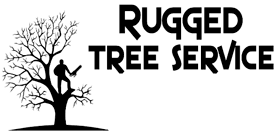When the Santa Ana winds kick up, weak limbs become flying debris. Proactive trimming now can prevent roof punctures, fence damage, power outages, and costly emergency calls later. Here’s a practical guide homeowners in Southern California can use to get wind-ready — and how a professional crew keeps it safe, clean, and compliant.
Why Trim Before the Winds Arrive
Reduce breakage: Remove deadwood and stressed limbs so there’s less to snap under gusts.
Protect structures: Clear branches that overhang roofs, eaves, sheds, and vehicles.
Prevent outages: Keep trees well away from service drops and street lines (utilities have strict clearance rules).
Healthier trees: Proper pruning improves structure, airflow, and long-term stability.
Signs Your Trees Need Attention
Dead, cracked, or rubbing branches
Large limbs over the roofline or driveway
Trees leaning more than usual, new soil heaving, or exposed roots
Dense, “sail-like” canopies with little light penetration
Fungus conks on trunks, peeling bark, or insect damage
What We Trim (and What We Don’t)
Do: Remove dead/diseased wood, reduce crossing branches, lighten extended limbs, and raise low canopies over walkways and drive areas.
Don’t: Top trees. It weakens structure, invites decay, and increases future failure risk.
Structural pruning (young trees): Set them up to resist wind with a central leader, well-spaced scaffold branches, and balanced crown.
Pro tip: Think “thin and balance,” not “hack and top.” Strategic reduction cuts reduce wind load without butchering the canopy.
Roof & Property Clearances
Maintain safe clearance above roofs, gutters, chimneys, and solar panels.
Keep sightlines clear at driveways/intersections for safety.
Power lines: Never DIY near energized lines. Only qualified line-clearance arborists should work within utility minimum approach distances. We coordinate with your utility when needed.
Palms, Pines, and Eucalyptus — Special Notes
Palms: Remove dry fronds and fruit/seed pods that become wind-blown projectiles.
Pines: Look for pitch tubes, bark beetle signs, and heavy end-weight on long leaders.
Eucalyptus: Fast-growing with brittle wood — periodic reduction and deadwood removal are key.
Timing & Lead Times
Santa Ana events can pop up multiple times in fall and winter. Booking trimming before forecasted wind periods keeps you off the emergency list and gives time for proper cleanup and haul-off.
Our Wind-Ready Trimming Process
On-site assessment – Identify hazards, species-specific needs, and utility clearance requirements.
Plan & pricing – Transparent scope (which trees, which limbs, exact disposal).
Safe access & protection – Cone/flagging, roof and landscape protection, drop-zone setup.
Professional pruning – ANSI A300-aligned cuts for tree health and stability.
Clean haul-off – Chip, recycle, and leave the site tidy.
Final walkthrough – Verify clearances and answer maintenance questions.
DIY vs. Pro: Safety First
Ladders + chainsaws + wind are a risky combo.
Never trim near service drops or street lines yourself.
Large limbs, tall trees, and complex rigging require a licensed contractor and, ideally, an ISA-Certified Arborist.
Post-Trim Maintenance
Water deeply but infrequently (per season and species).
Mulch to protect roots and retain moisture (keep away from trunk flare).
Schedule annual or biannual inspections for fast-growing species.
Ready to Wind-Proof Your Property?
If your trees overhang the roof, brush your service lines, or shed heavy debris, now’s the moment. Book a wind-readiness trim and we’ll handle assessment, pruning, permits/utility coordination if needed, and cleanup — start to finish.
How far should branches be from my roof?
Aim for a safe clearance so branches can’t scrape shingles in high winds. A pro will set clearances appropriate to species, growth rate, and local codes.
Can trimming hurt my trees?
Not when done correctly. We use reduction and deadwood cuts per ANSI A300 standards to preserve structure and health.
Do I need a permit to remove or heavily prune a tree?
Some cities protect certain species, sizes, or heritage trees. We’ll check local rules and handle paperwork if required.
What if branches are close to power lines?
Don’t attempt it yourself. We’ll coordinate with the utility or bring a qualified line-clearance arborist.
